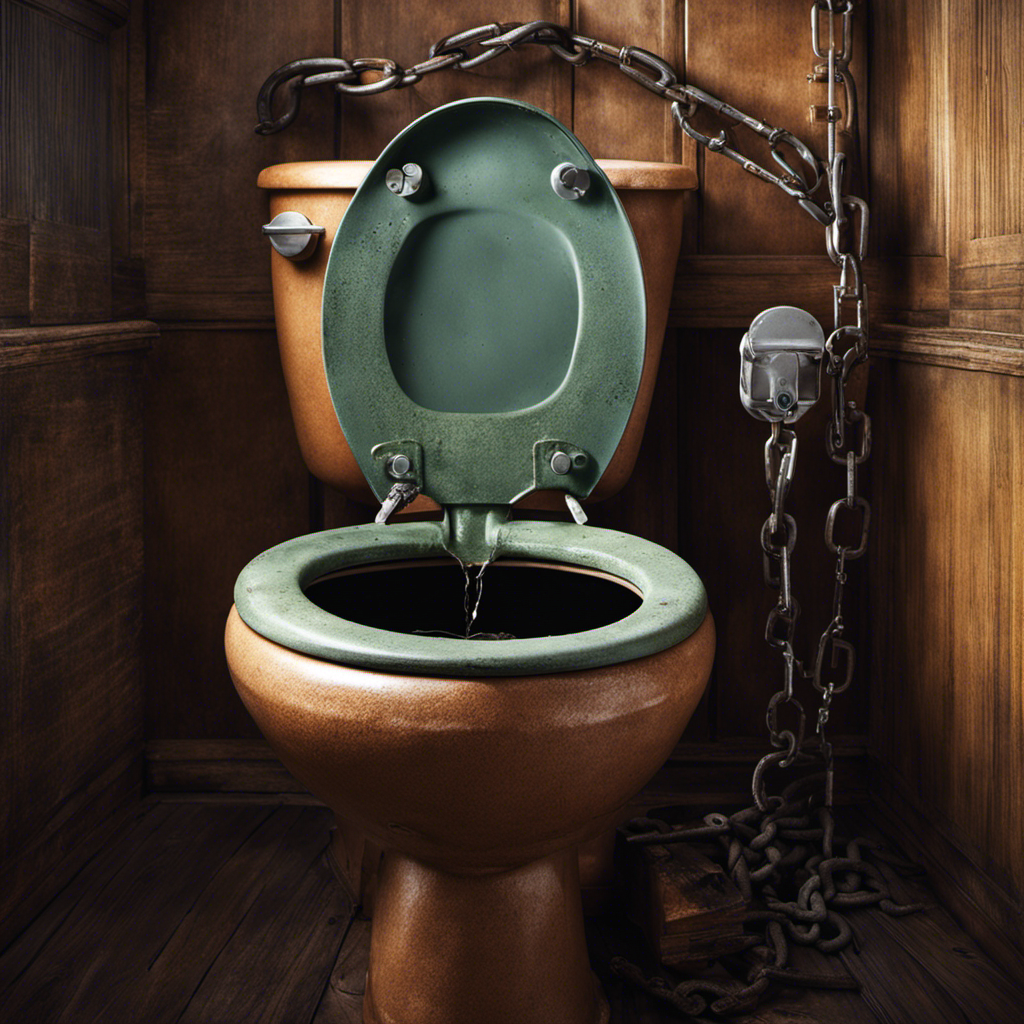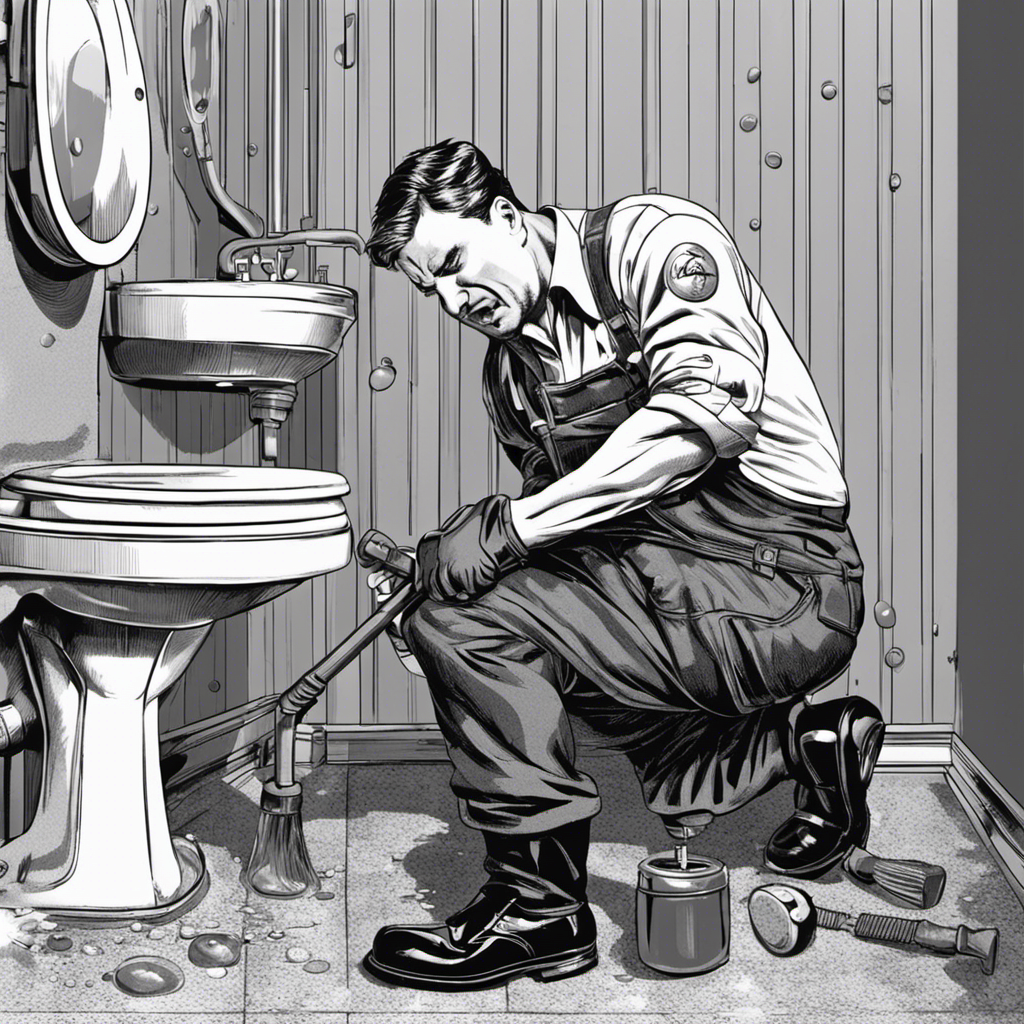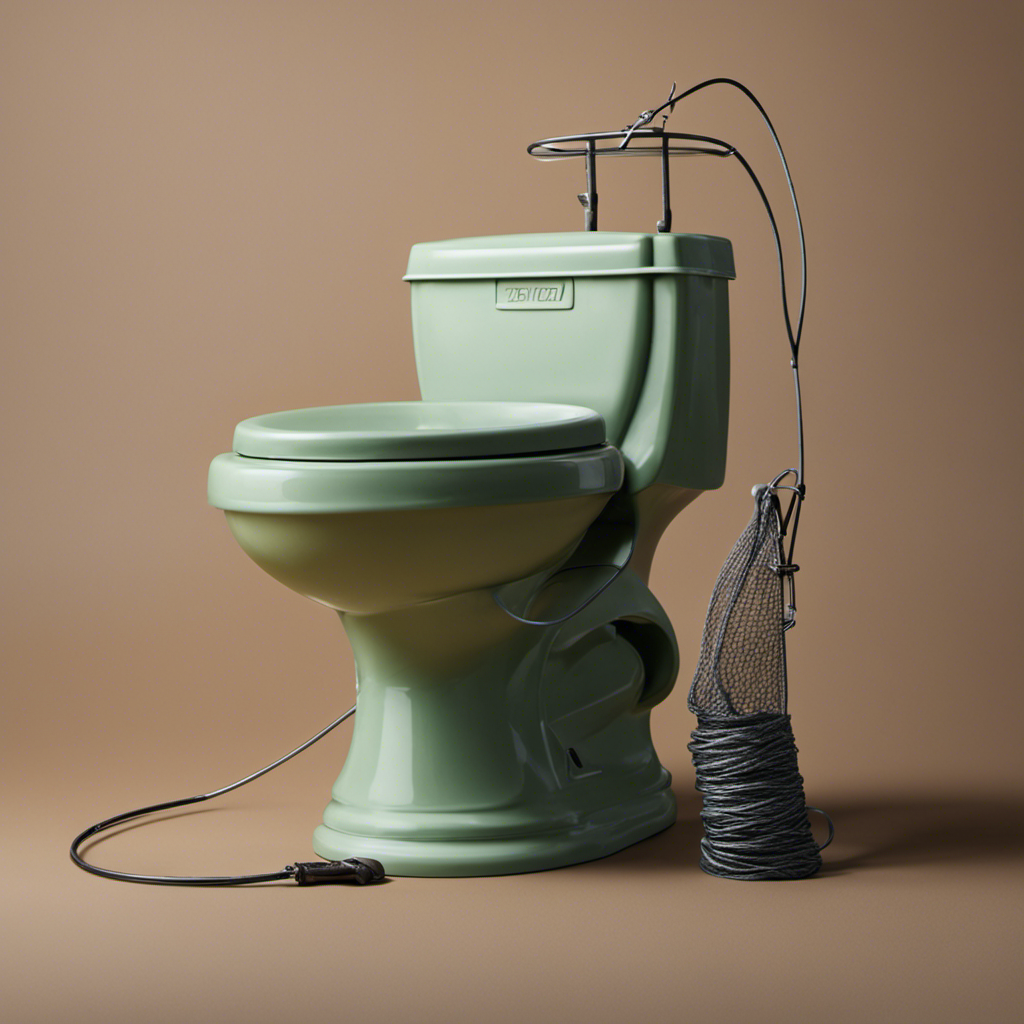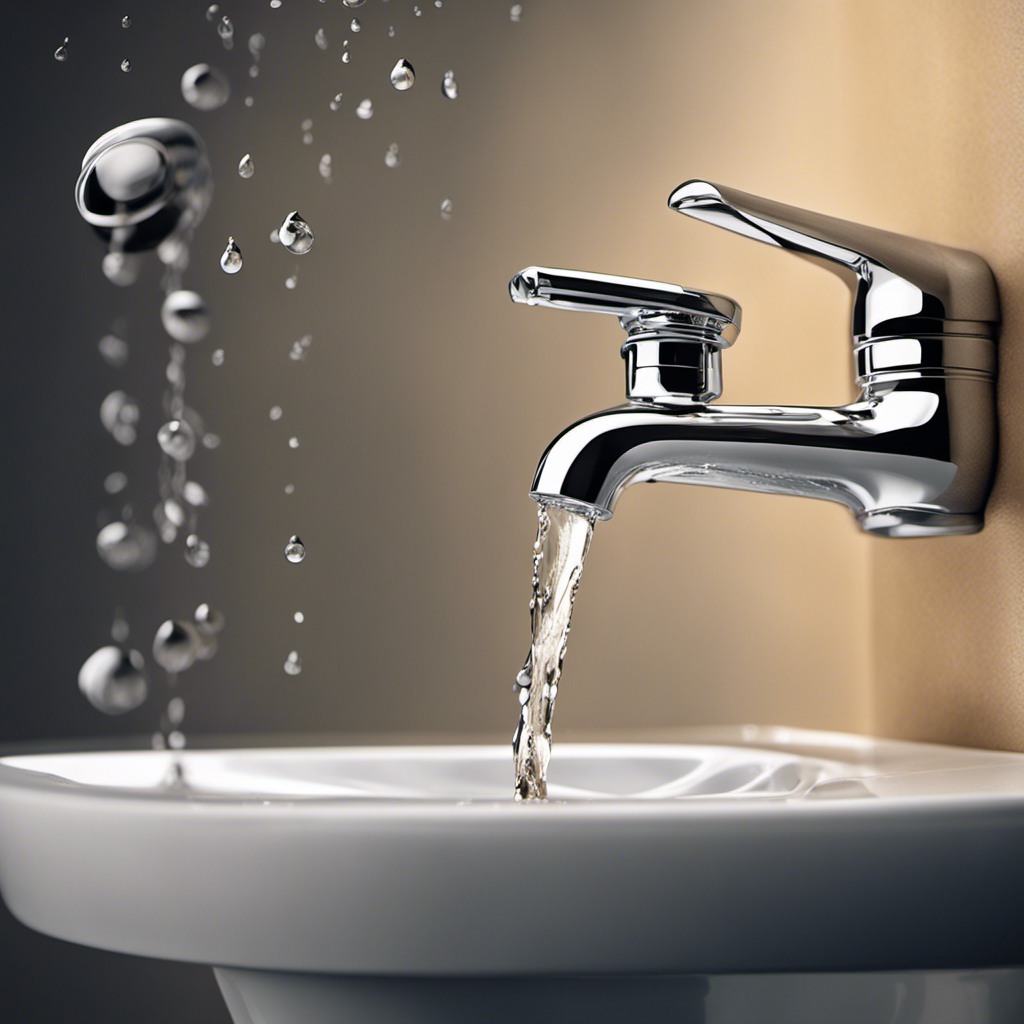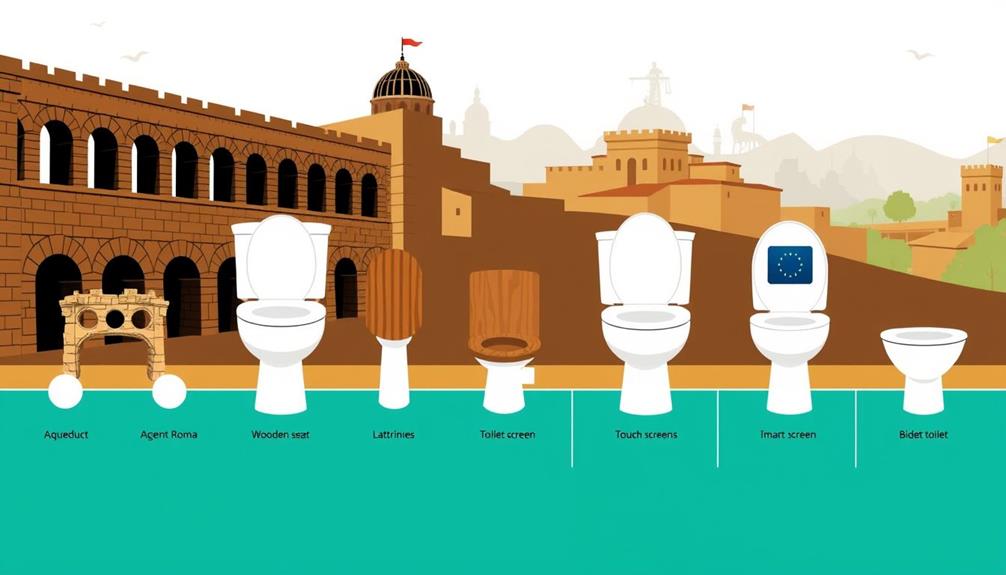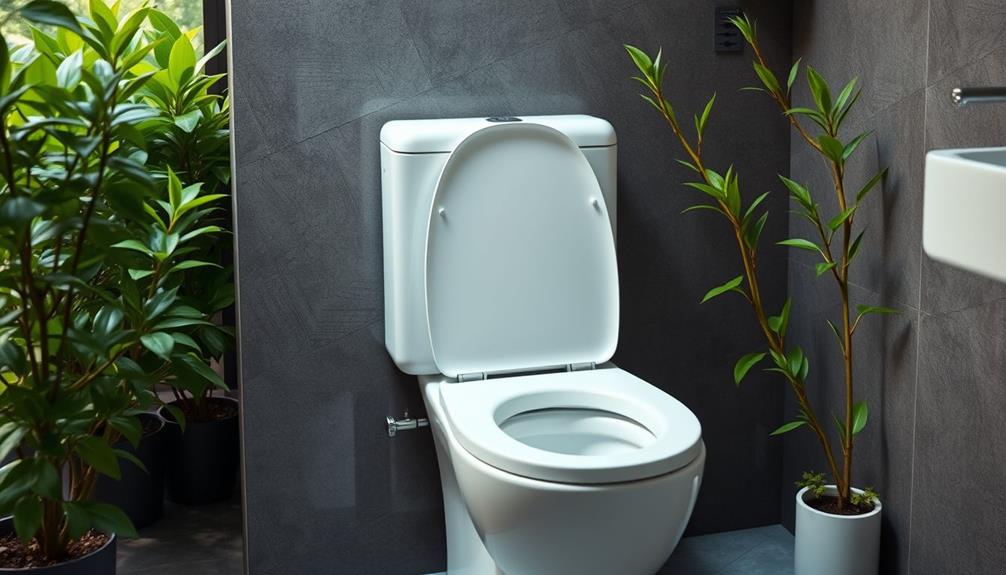I’ve had my fair share of frustrations with a slow filling toilet tank, and I’m sure many of you have too. But fear not, because I’ve done some digging and gathered all the information you need to troubleshoot and solve this pesky issue.
From problems with the water supply valve to issues with the float ball, fill valve tube, trip assembly, and flapper valve, we’ll cover it all.
So let’s dive in and get to the bottom of this slow filling problem once and for all.
Key Takeaways
- Slow filling toilet tanks can be caused by problems with the water supply valve, float ball, fill valve tube, trip assembly, or flapper valve.
- Diagnosing the specific issue is important in finding the appropriate solution.
- Unclogging the water supply valve or replacing it may solve the slow fill rate problem.
- Checking and replacing a waterlogged float ball, cleaning the fill valve tube, and adjusting the trip assembly can also help resolve the issue.
Water Supply Valve Problem
I should check if the water supply valve is fully open or if there is debris clogging it, as this could be causing the slow fill rate in my toilet tank.
Regular maintenance of water supply valves is crucial to ensure proper functioning. Over time, these valves can become obstructed with debris or mineral deposits, leading to reduced water flow.
To troubleshoot and unclog the water supply valve, start by turning it on and off a few times to dislodge any debris. If that doesn’t work, using a plumbing snake can help remove any stubborn clogs.
It’s important to check the valve regularly and clean it as needed to prevent future issues. By keeping the water supply valve in good condition, you can ensure a faster fill rate in your toilet tank.
Waterlogged Float Ball
Checking the float ball to see if it is floating on top of the water or submerged can help determine if it needs to be replaced. A waterlogged float ball can cause issues with the toilet tank filling properly. If the float ball is submerged, it may be a sign that it needs to be replaced.
Replacing the float ball is a straightforward process that can improve the tank’s filling efficiency. To replace the float ball, first, turn off the water supply to the toilet. Then, disconnect the float ball from the fill valve. Next, attach the new float ball to the fill valve and ensure it is securely in place. Finally, turn the water supply back on and test the toilet’s filling to see if the issue has been resolved.
Troubleshooting float ball issues and replacing the float ball if necessary can help restore proper functionality to the toilet tank.
Fill Valve Tube Issues
Inspecting the fill valve tube for any clogs or misalignment is essential to ensure proper water level regulation in the toilet tank. Here are the steps for troubleshooting fill valve tube leaks:
-
Check for clogs: Look for any debris or mineral buildup inside the fill valve tube that could be obstructing the water flow. Use a flashlight to get a clear view of the tube’s interior.
-
Clean the tube: If you notice any clogs, cleaning the fill valve tube is necessary. Start by turning off the water supply to the toilet. Then, disconnect the tube from the fill valve and flush it with water to remove any debris. You can also use a small brush or toothbrush to scrub away stubborn deposits.
-
Inspect for misalignment: Ensure that the fill valve tube is properly aligned with the overflow tube inside the toilet tank. If it is misaligned, adjust it so that it sits securely in place.
-
Perform regular maintenance: To prevent future clogs or leaks, it is important to regularly clean and maintain the fill valve tube. This includes checking for any signs of wear or damage and replacing the tube if necessary.
Trip Assembly Issues
Replacing the trip assembly components can help ensure that the toilet tank fills at the proper rate. One sign of a faulty trip assembly is if the tank takes longer than usual to fill after flushing. Another sign is if the handle feels loose or doesn’t engage properly when pressed.
To address these issues, start by checking the chain tightness. The chain should be tight enough to raise the flapper when the handle is pressed, but not so tight that it restricts movement. Adjust the chain by removing a link or two until the correct tightness is achieved.
If the trip assembly is still not functioning properly, it may need to be replaced. This involves removing the old components and installing new ones according to the manufacturer’s instructions.
Flapper Valve Replacement
I can easily determine if a flapper valve needs replacing by adding food coloring in the tank and observing if it leaks into the bowl. Here’s how to replace a flapper valve and the benefits of regular maintenance:
- Turn off the water supply line to the toilet.
- Flush the toilet to empty the tank and remove any remaining water.
- Locate the old flapper valve and carefully remove it.
- Insert the new flapper valve firmly against the tank drain hole.
Regularly replacing the flapper valve is essential for maintaining a properly functioning toilet. The benefits of this regular maintenance include preventing leaks and water wastage, ensuring efficient flushing, and avoiding costly repairs in the long run. By maintaining the flapper valve, you can ensure the longevity and optimal performance of your toilet system.
Dealing With Blockages in the Pipeline
When faced with blockages in the pipeline, it is important to address them promptly to ensure proper water flow in the toilet tank. Clearing obstructions can be done using a plumbing snake.
A plumbing snake is a long, flexible tool that can reach deep into the pipeline to remove clogs. To use a plumbing snake, insert it into the toilet bowl and push it through the pipeline while rotating it. The snake’s sharp tip will break up and dislodge any blockages, allowing water to flow freely again.
It is important to be cautious when using a plumbing snake to avoid damaging the pipes or causing further blockages. If the blockage persists or if you are unsure about using a plumbing snake, it is best to consult a professional plumber for assistance.
Replacing the Water Supply Line
To ensure proper water flow in the toilet tank, it is important to address any issues with the water supply line. Here are the steps to troubleshoot and replace a faulty water supply line:
-
Turn off the water supply: Locate the shut-off valve near the toilet and turn it clockwise to shut off the water flow. This will prevent any leaks or flooding during the replacement process.
-
Disconnect the old supply line: Use a wrench to loosen the nut connecting the supply line to the shut-off valve. Once loosened, carefully remove the old supply line.
-
Install the new supply line: Take the new supply line and attach it to the shut-off valve by tightening the nut with a wrench. Make sure it is securely fastened to prevent any leaks.
-
Turn on the water supply: Once the new supply line is connected, turn the shut-off valve counterclockwise to restore the water flow. Check for any leaks and ensure that the toilet tank fills properly.
Frequently Asked Questions
How Do I Know if the Water Supply Valve Is the Cause of My Slow Filling Toilet Tank?
If my toilet tank is filling slowly, I can check the water supply valve by ensuring it is fully open and free of debris. If necessary, I can replace faulty valve parts to improve the flow.
Can I Fix a Waterlogged Float Ball or Do I Need to Replace It?
I can fix a waterlogged float ball by replacing it with a new one. Troubleshooting other causes of a slow filling toilet tank involves checking the water supply valve, fill valve tube, and trip assembly.
How Often Should I Clean the Fill Valve to Prevent Blockages?
To prevent blockages, I clean the fill valve every 6 months. Regular maintenance helps ensure proper water flow and avoids slow filling. It’s an easy preventive measure that keeps my toilet tank working efficiently.
What Should I Do if Adjusting the Chain’s Tightness Doesn’t Solve the Slow Filling Issue?
If adjusting the chain’s tightness doesn’t solve the slow filling issue, I would consider replacing the fill valve. A fill valve replacement can help ensure proper water flow and improve the tank’s filling speed.
Are There Any Signs That Indicate It’s Time to Replace the Flapper Valve Other Than Food Coloring Leakage?
Other signs of flapper valve replacement include inconsistent water levels, frequent toilet clogs, and a toilet that runs continuously. The lifespan of a flapper valve is typically 3-5 years.
Conclusion
In conclusion, troubleshooting a slow filling toilet tank requires careful examination of various components.
Just like a detective deciphering clues, we must inspect the water supply valve, float ball, fill valve tube, trip assembly, and flapper valve to identify the culprit.
By addressing issues such as clogs, wear, misalignment, and chain tightness, we can restore proper functionality to our beloved porcelain throne.
Remember, regular maintenance and timely replacements are key to keeping our toilet tanks flowing smoothly, just like a well-oiled machine.
